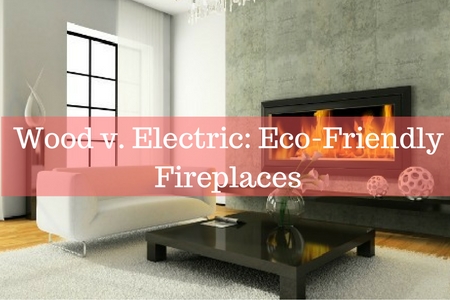Wood-burning stoves and traditional fireplaces have kept families warm for centuries. But natural-gas fireplaces have gained popularity because of their simplicity and minimal maintenance. In today’s environmentally conscious world, which fireplace is truly more eco-friendly?
There’s nothing like building a fire in your fireplace, listening to it crackle through the night, and enjoying its warmth. While this may be relaxing, there’s a debate right now about how “carbon neutral” firewood actually is. (Carbon neutral basically means the product doesn’t increase the amount of carbon dioxide already in the air, and it doesn’t have a carbon footprint.)
Firewood is considered more eco-friendly than natural gas mainly because it’s a renewable resource, but the smoke is still a pollutant. Some sources say the smoke caused by burning wood has a smaller carbon footprint than a tree that’s naturally biodegrading, which technically makes wood burning carbon neutral.
Now, while wood-burning fireplaces may be easier on the environment, it’s important to remember that an improperly maintained fireplace can actually pull heat from your room, making your home less energy efficient. This happens when your chimney and fireplace are poorly sealed and let the heat escape out of your house. It’s important to regularly clean your fireplace out and occasionally check your chimney for a draft.
First off, one of the main things to remember about a gas fireplace is that most are simply for decoration, and shouldn’t be expected to heat an entire room. Gas log fireplaces are very simple to start, usually with just the flip of a switch, and come in a variety of designs to match any home’s decoration.
As for being eco-friendly, these fireplaces are burning natural gas or liquid propane (which are fossil fuels) in most instances, and emitting fumes into the atmosphere. However, emission is still low because this type of fireplace is typically used for special occasions, as opposed to daily. These should be thought of as decorative – not as an alternative to a furnace.
So, in the big picture, a natural wood-burning fireplace is more eco-friendly. But this option isn’t necessarily the most ideal for everyone. If your fireplace is sealed and you have the firewood, by all means, continue to burn away!
But if you have a wood-burning fireplace that seems to remain dormant all winter because of the extra stress and care that comes with it, a gas log pit is a great option that’s still fairly eco-friendly. Most traditional fireplaces can be fitted with gas logs and the proper fuel to give off that holiday charm with the flip of a switch.

